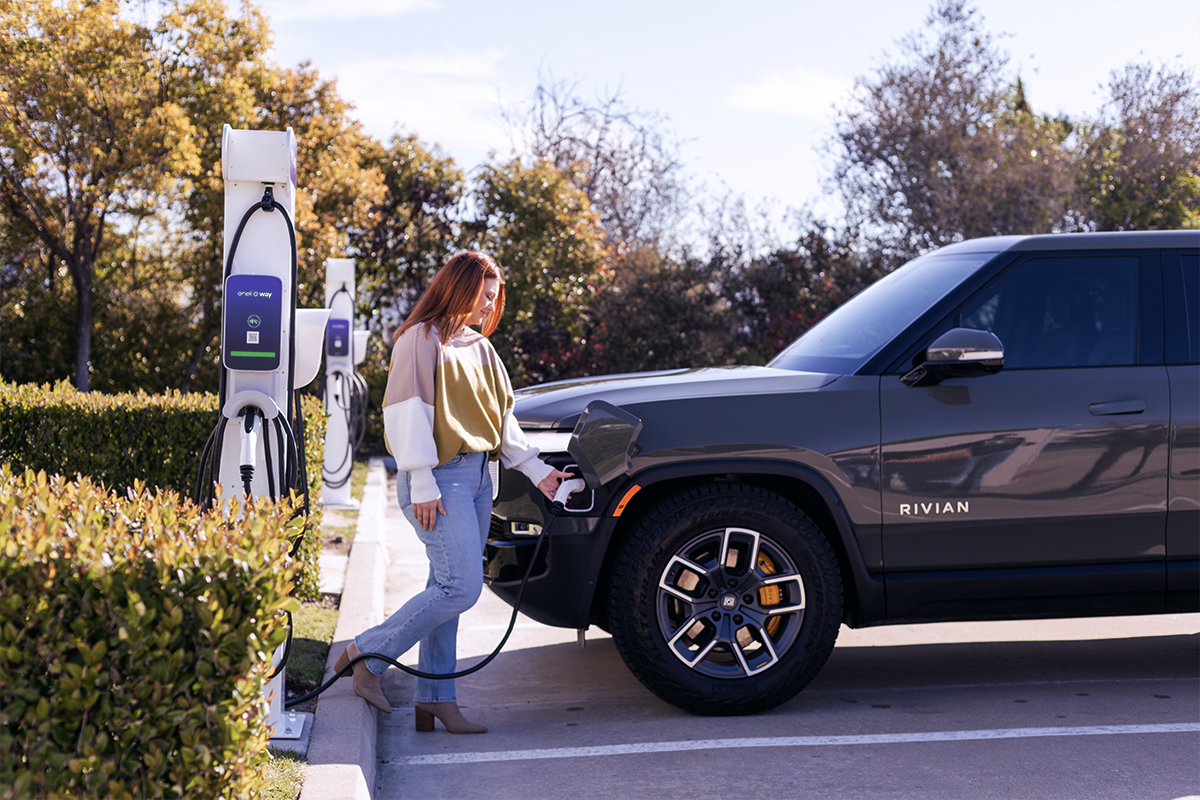Cost to maintain R1T vs. R1S
Both the R1T and R1S benefit from the simplicity of an electric drivetrain, which reduces the number of moving parts from several hundred to “a few”. That leaves far less to service and a lower risk of engine malfunction. Electric motors don’t rely on fluid lubricants either, which means no oil changes or power steering fluid.
What’s left? Tire and brake replacement and fluid change, transmission fluid and coolant. Even the brake maintenance is less frequent than it is for gas-powered vehicles thanks to regenerative braking capabilities on the R1T and R1S. Regenerative braking—a common feature of electric vehicles—delegates most of the car’s braking to the electric motor, which turns the friction created by slowing the car down into energy stored in the batteries. This greatly reduces the amount of work put on the brake pads and rotors, extending their life and costing you less to maintain.
Purchase cost of R1T vs. R1S
The cost of the Rivian R1S and R1T varies depending on trim level, bells and whistles, and any available incentives or discounts. The 2023 Dual-Motor R1T starts at $74,800 including the $1,800 factory to dealership delivery charge. The 2023 Dual-Motor R1S is $5,000 more for the base model. For both models, Rivian offers a step between the entry-level Dual-Motor and the Quad-Motor (which costs $8,000 extra) called Performance Dual-Motor, which adds an additional 100hp and a meaningful amount of acceleration. Upgrading to the Large battery pack (~350 mile range) for either model will cost $6,000, and $16,000 for the Max pack (~400 mile range).
All told, the Quad-Motor R1T with a Large battery pack will run you $88,000 and the R1S with the same features costs $93,000. For the Performance Dual-Motor R1T with the Max battery pack it’s $95,800, and $100,800 for the same level R1S. These prices are all before incentives, which could lower the price by more than $10,000 depending on what state you’re registering your vehicle in.
Battery life of the R1T vs. R1S
In 2023 Rivian followed Tesla and Ford in switching from nickel-manganese-cobalt (NMC) battery cells for their standard range models to lithium iron phosphate (LFP) batteries. LFP batteries are less costly to build and have a much longer lifespan: they can be charged twice as many times before needing to be replaced. Plus the raw materials for them require less extensive mining and can be sourced from countries with stronger labor laws. The trade off is their lower power density than NMC batteries, which limits range. That’s why Rivian continues to use NMC technology for its Max pack.
Because the R1S and R1T are relatively new vehicles to market, there isn’t a wealth of data on battery life. That’s a good thing though; as of July 2023 there were no major reports of Rivian batteries having short lifespans. Just like gas-powered engines, battery life is affected by usage and climate, so not all customers will get the same lifespan out of their batteries. Still Rivian offers a best-in-class 8 year, 175,000 mile warranty on all its batteries.
Charging the Rivian R1T vs. R1S
Both the R1T and R1S will charge at the same speed, since both use the same size battery packs. For a seamless driving experience and maximum battery life, you’ll want to ensure that your Rivian stays well-charged but isn’t getting overcharged. To do that, Level 2 smart chargers are the way to go.
Level 2 smart chargers like the Enel X Way JuiceBox are cost-effective, high speed, WiFi connected chargers that give you maximum control over when and how you charge. If you’re on a time-of-use rate, your smart charger will analyze your rate and can be instructed to only charge when energy is cheapest.
The JuiceBox uses 240V power—the same as many large home appliances—to deliver up to 11.5 kW of power per hour. If you already have a 240V NEMA 14-50 outlet near where you plan to charge your Rivian, installation can be done easily without a professional electrician: just mount your charger, plug it into the wall, and connect to WiFi.
The power provided by the JuiceBox is enough to easily recharge your Rivian overnight. Even better, your JuiceBox will automatically stop charging when your Rivian is fully charged to avoid taxing the batteries.


